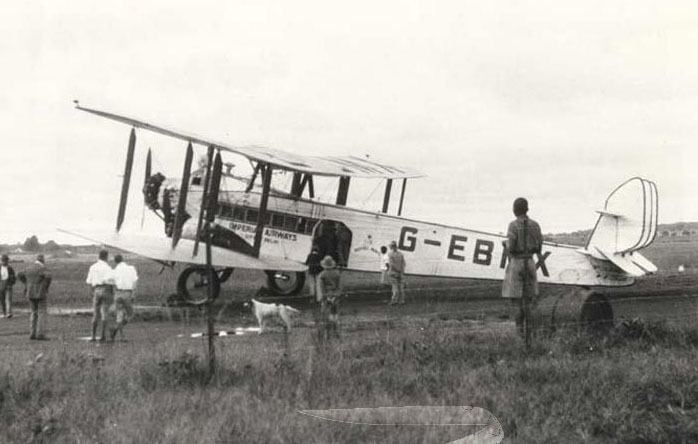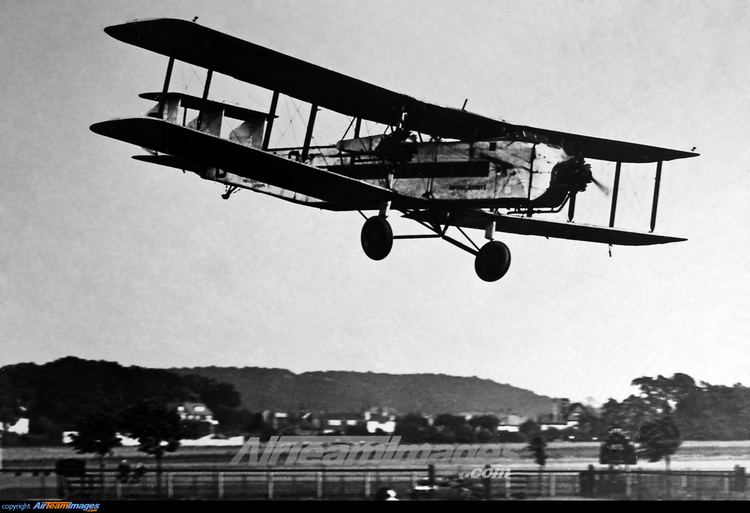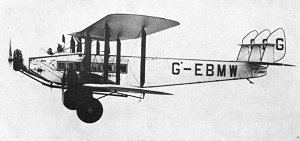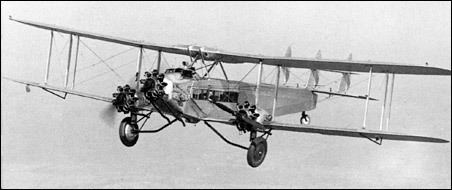Top speed 208 km/h Length 17 m First flight 1926 | Wingspan 24 m Retired 1942 Manufacturer de Havilland | |
 | ||
The de Havilland DH.66 Hercules was a 1920s British seven-passenger, three-engined airliner built by de Havilland Aircraft Company at Stag Lane Aerodrome. As a more modern replacement for the D.H.10s used on the RAF's airmail service, Imperial Airways used the Hercules effectively to provide long-distance service to far-flung regions. Although the giant airliners were slow and cumbersome, they pointed the way for future airliners.
Contents
- Design and development
- Operational history
- Operators
- Accidents and incidents
- Specifications DH66A
- References

Design and development

The Hercules was designed for Imperial Airways when it took over the Cairo–Baghdad air route from the Royal Air Force. The design was a three-engined biplane with room for seven passengers and the ability to carry mail. The prototype first flew on 30 September 1926, and an order for five aircraft was received from Imperial Airways. The type name Hercules was chosen in a competition in the Meccano Magazine in June 1926.
Operational history

An inaugural flight between Croydon and India left the United Kingdom on 27 December 1926, and arrived in Delhi on 8 January 1927. West Australian Airways ordered four aircraft to replace the DH.50. On 2 June 1927, the first service on the Perth-Adelaide route was carried out. Imperial Airways ordered two more aircraft but it lost three aircraft in accidents between September 1929 and April 1930. To replace the lost aircraft, two were purchased from West Australian Airways. The Imperial Airways aircraft were withdrawn from service in December 1935 following another crash in Southern Rhodesia in November 1935. Three aircraft were sold to the South African Air Force. One of the Australian aircraft survived until 1942 when it was destroyed by enemy action.
Operators
Accidents and incidents

Specifications (DH.66A)
General characteristics

Performance

